Update March 2013
I feel it necessary to point out that Thomas Rhodes (1789–1868), engineer to the Shannon Commissioners, whose name is on a plaque on Athlone bridge, was not a brother of Cecil Rhodes. Thomas was born near Bradford, the son of a carpenter called James Rhodes; Cecil was born Bishop’s Stortford, the son of a clergyperson.
Update October 2010
Added a photo (© Copyright Alan Murray-Rust 1981) showing manual operation of the gates in 1981.
Update 20 December 2009
Added, near the top of the page, a photo by Michael Coyle of the plaque on the bridge. This is in response to Eva McDermott’s query (see Comments below), so many thanks to Michael for this.
This page is intended to display the sort of “waterways furniture” you can find at a River Shannon lock. This is Athlone Lock which, along with Meelick (Victoria) Lock, is one of the two largest locks on the Shannon, at 155 feet by 40 feet; the upstream locks, from the north of Lough Ree upwards, are only 102 feet by 30 feet. (Ardnacrusha Lock, in the hydroelectric power station, is smaller still, but very much deeper with a fall of about 100 feet.)
As I examine the photos of lock furniture, I realise that I don’t actually know what everything is, or was, for. I’m trying to show both the original nineteenth-century equipment and the modern equipment. If you can correct anything I’ve said, or add to it, do please let me know by leaving a Comment at the bottom of the page.
Let’s start with a plaque put up by the Institution of Engineers of Ireland.
Plaque at Athlone Lock
Note that this plaque refers to the Shannon Navigation as a whole, not to this lock. Omer’s original route through Athlone was via a canal to the west.
Here is another plaque, on the road bridge, giving the names of the people responsible. Note that Thomas Rhodes appears again.
Michael’s full comment appears below, but he says that the names on the plaque are Lord Heytesbury (Lord Lieutenant), Thomas Rhodes (Principal Engineer), John Long (Resident Engineer) and Thomas McMahon (Contractor).
Athlone Lock is on the west bank of the river. Here are some photos of the weir in Athlone, stretching right across the river.
Athlone weir
The sluices are hidden in that photo: they’re closer to the wall on which the person is standing.
The sluices at Athlone Lock
Sometimes, though, the water level below the lock is as high, or almost as high, as the level above. That, of course, means that much of the land downstream as far as Meelick will be flooded. This next photo shows floods in June.
June floods
Here are some photos of floods in January. These are taken from the east bank, below the weir. You can see the navigation arch of the bridge on the left.
January floods 1
January floods 2
Here, while we’re on the east side, is a pic of the bank itself, which is pleasant for walks and where small boats are kept.
The east bank
Here we see one cruiser heading upstream into the lock while another one leaves it.
Boats entering and leaving the lock
In high water, the small quay wall on the left, below the lock, gets flooded …
Invisible quay
… so a floating pontoon has been installed on the other side of the lock entrance.
The pontoon and the end of the baffles intended to deflect the flow from the sluices away from the boats waiting for the lock
However, there is still very little space to tie up at busy times. It’s part of the problem of using nineteenth-century infrastructure, designed to cope with a small number of steamers and barges with professional crews (and indeterminate numbers of cots, turf boats and other vessels), for larger numbers of leisure boaters, some of them having little experience, driving more frangible craft. Waterways Ireland has been increasing the provision for lock-waiting areas.
The other problem with Athlone is that it is some distance away, upstream, from the last safe harbour. Boaters who arrive after lock opening hours, especially on Sundays when locks close early, can end up tied six abreast across the river, waiting for the lock to open next day.
All Shannon locks are now automated and keeper-operated. All keepers have mobile phones, and the numbers are published. However, there is no VHF communication and there is no approved set of hand signals for communicating between keeper and boat.
The cruiser we saw earlier has now entered the lock. The keeper has taken the ropes, passed them around the bollards and returned them to the boat. The lock also has chains, but no ladders.
In the lock
The operation of the lock is controlled from the small green doorway, with the roller shutter, in the building below (this photo was taken out of office hours). The building itself houses the offices of the Inspector of Navigation, and is therefore deserving of respect, but otherwise it’s a ghastly eyesore.
The control room and the Inspector’s office
Here’s a photo taken during working hours.
Operating the lock
Once the upcoming boats have risen, or before the downgoing boats have dropped, the keeper collects the fee. It is usual to round up the amount you pay.
Her Late Majesty Victoria, by the Grace of God, of the United Kingdom of Great Britain and Ireland, Queen, Defender of the Faith etc, is commemorated in stone, as are her Commissioners for the Improvement of the Navigation of the River Shannon and their engineer Thomas Rhodes. But another man is commemorated here too: Denis (Dinny) Madigan, about whom you can read here, here and here. (I notice I wrote all three of those pieces.)
Denis Madigan, Thomas Rhodes and HM Queen Victoria
Here are the upper gates of the lock, closed. Note the speed limit signs.
The upper gates, closed
And here they are, closing.
The upper gates, closing
Although manual labour is no longer required, old equipment remains. I don’t know what this winch is for.
Winch
Thomas Rhodes got his name on lots of things, like the winches for opening and closing the gates. Neil Arlidge points to similar equipment in Yorkshire:
The larger bulbous winches would be used to close/open the gates, by a pair of chains. One would be attached to each side of the gates and connected up to the windlass through pulleys and a shaft in the lockside. One winch would therefore do the closing and the other the opening.
The same method is still used at Castlemill Lock on the River Foss in York and was until they were recently mechanised on the Keadby tidal lock on the Stainforth and Keadby Canal and Naburn Tidal Lock on the Yorkshire Ouse. This link is to Castlemill Lock on the Foss.
Gate winch
The next photo shows three of them. Note also the depth gauge and the three different types, sizes and positions of bollards. The small modern bollards, nearest to the chamber, are nowadays in use.
Three of them
Here is some more information about the gate winches.
In the next photo you can see the landward ends of three of the four gates, and there are six gate winches.
Six of them
Here’s a close-up showing the heel-post of one of the gates as well as the modern ram for (I presume) opening and closing it.
Heel post and ram
I think that the blue object nearest the camera in the next photo was for letting water in to the lock; Neil Arlidge agrees.
The smaller blue boxes at the top of the lock must have been to control the original ground paddles/ground racks.
Upper water-inlet control?
Here is a photo of the lower gates being manually operated in 1981. This photo is © Copyright Alan Murray-Rust and licensed for reuse under this Creative Commons Licence.
I think the brown vertical cylinders now to be seen on the lower gates (start from the left of the photo and go just past the second upright supporting the walkway) are for the gate racks/paddles to let the water out.
Lower water-outlet gear
I had absolutely no idea what the item in the cage (below) was or why it had to be kept locked up. However, Mark Anthony from Athlone Live says:
The fierce pipe is none other then a rain water collector to register rainfall and contained a calibrated glass test tube in it. This was checked by the lock master daily and recorded as part of his job. Keep up the good work.
Fierce pipe, to be kept locked up
Finally, access to the lock island can be controlled, so that makes it a good place for the Inspector to keep his launch.
The Inspector’s launch 1
Here are two better photos of it.
The Inspector’s launch 2
The Inspector’s launch 3
Flagpole on the lock island
As always, comments and corrections are welcome; please use the form at the bottom of the page. And if you want to be notified of additions to this site, subscribe to the RSS feed by clicking on the orange button in the address bar. Whenever I add or amend a page, I do a short blog post about it, containing the address of the new or amended page; if you’ve subscribed to the RSS feed, and have some sort of RSS reader set up for yourself, you’ll get that short message; then you can decide for yourself whether you want to look at the full story on the page in question.





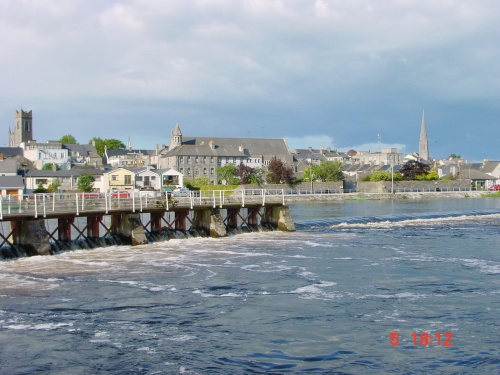
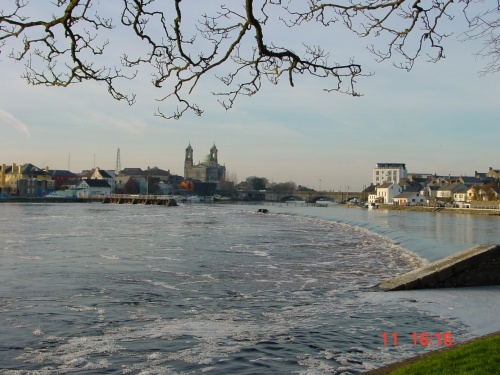


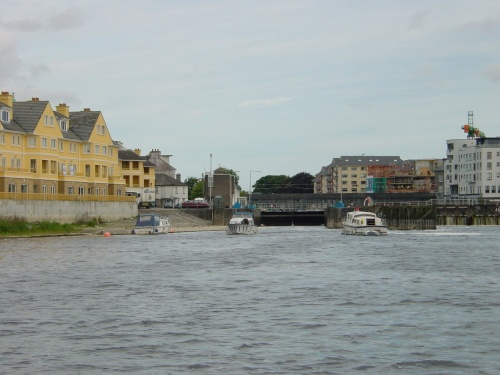









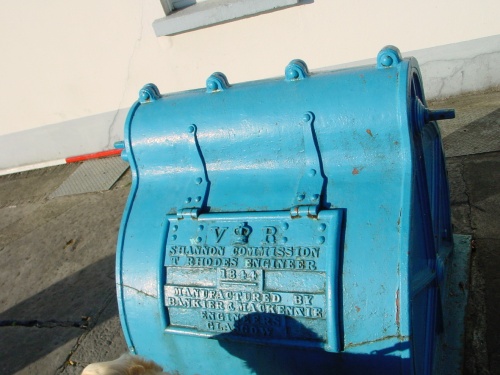

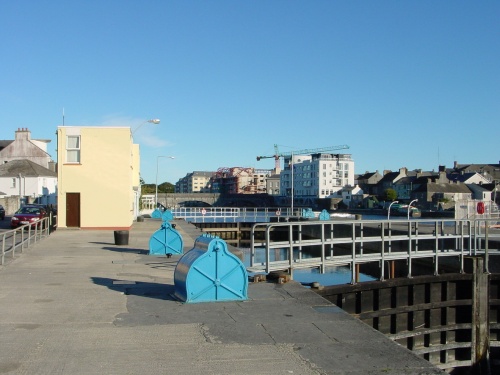



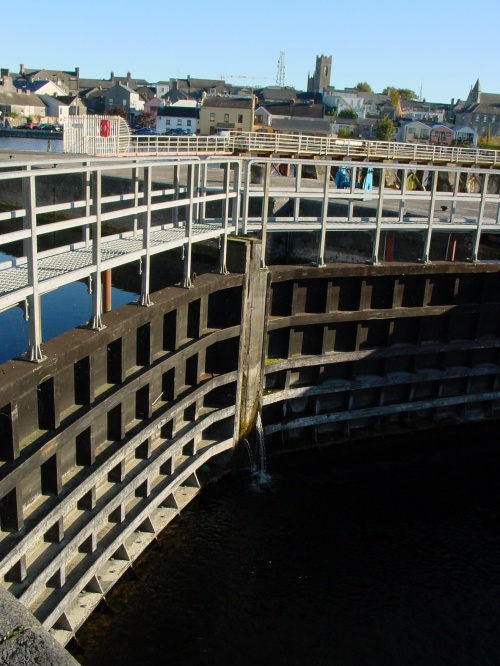


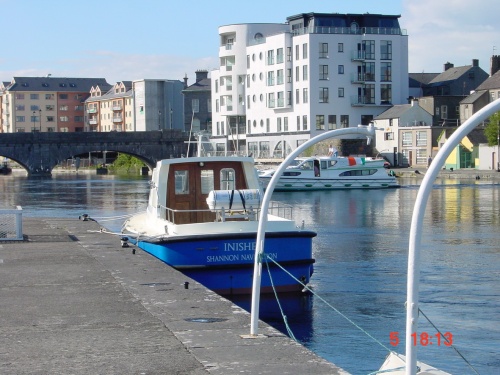



Hi Brian,

The larger bulbous winches would be used to close / open the gates, by a pair of chains. One would be attached to each side of the gates and connected up to the windlass through pulleys and a shaft in the lockside. One winch would therefore do the closing and the other the opening. The same method is still used at Castlemill Lock on the River Foss in York and was until they were recently mechanised on the Keadby tidal lock on the Stainforth and Keadby Canal and Naburn Tidal Lock on the Yorkshire Ouse. The link to the image below shows Castlemill Lock on the Foss:
The smaller blue boxes at the top of the lock must have been to control the original ground paddles / ground racks.
Thanks, Neil. I’ve amended the text above and included your link.
Hello!The Fierce pipe is non other then a rain water collector to regester rainfall and contained a calabrated glass test tube in it .This was checked by the lock master daily and recorded as part of his job. Keep up the good work.
The upper gates were completely replaced in 1969, the lock was dammed and the old wooden gates dismantled and replaced by steel gates.
When the lockeeper opened a gate from the winch, he had to release the chain off the drum in order to close the gate and he did this by opening a ratchet lock on the side of the winch, it made a musical rattle as the chain rolled off the drum and back down in order to allow the gate to be closed from the opposite winch.
The smaller winches were for the sluices, the lower gates had the sluices on the gates themselves like on the canals but in the case of the breast (upper) gates in Athlone the water flowed through a channel built into the stone of the lock itself.
The pipe in the little square on the lock island was/is indeed a rain gauge. I see from your photo that it now has a padlock but it didn’t back in the 60s when I was a young lad. One day curiosity got the better of me so I climbed over the little fence and checked it out. Inside the pipe is a funnel and when I lifted out the funnel I found inside a glass jar with graduated markings down the side (probably inches) so I knew immediately that it must be a rain gauge and put it back together again.
Thanks, Michael. I don’t think I could have identified a rain gauge when I was young!
bjg
Are there any of the workers names inscribed on the stone of the Athlone Bridge, ive been told one of my people helped build the bridge and his name is on the bridge??
One of the stone blocks on the parapet has an inscription, I’ve asked my brother who lives in Athlone to take a photo, will type up the names when he sends it to me.
Eva: I didn’t know there were workers’ names on the bridge, so thanks for that information. I’m sorry I can’t help by providing information about it, and if Michael Coyle and his brother can provide the info that would be great.
Michael, if your brother does get a pic and would allow it to be put up on this page, I’d be happy to do that (with credit to him).
If that doesn’t work, it might be worthwhile posting a query in the excellent Athlone Live forum.
bjg
Hi folks, apologies for the delay but I took a snap of the inscription today and I hope the moderator or owner of this page will post the picture which I have sent to blog at wordpress.com
The people mentioned in the inscription are as follows..
Lord Heytsbury (Lord Lieutenant)
Thomas Rhodes (Principal Engineer)
John Long (Resident Engineer)
Thomas McMahon (Contractor)
The inscription is on a stone on the north parapet of the bridge, roughly midway along the solid stone section of the parapet. The boats visible above the parapet are moored at a floating jetty at the rear of the Radisson Hotel a section of which is visible in the upper right, the hotel is on the site of the old Athlone Woolen Mills.
Michael: that’s great; many thanks. I can’t actually see the photo and my technical knowledge is not all that great, so I’ll email you direct and see if I can get the photo from you. Assuming I can, I’ll be delighted to stick it on the web page. bjg
Water levels in Athlone have dropped since the floods but the level below the weir is still very high. If you look back up this page to the picture with the caption “Denis Madigan, Thomas Rhodes and HM Queen Victoria”, with the lower gates open the water was up to the bottom of the black Denis Madigan plaque. The lock looks full although technically it’s empty because both of the lower gates were open.